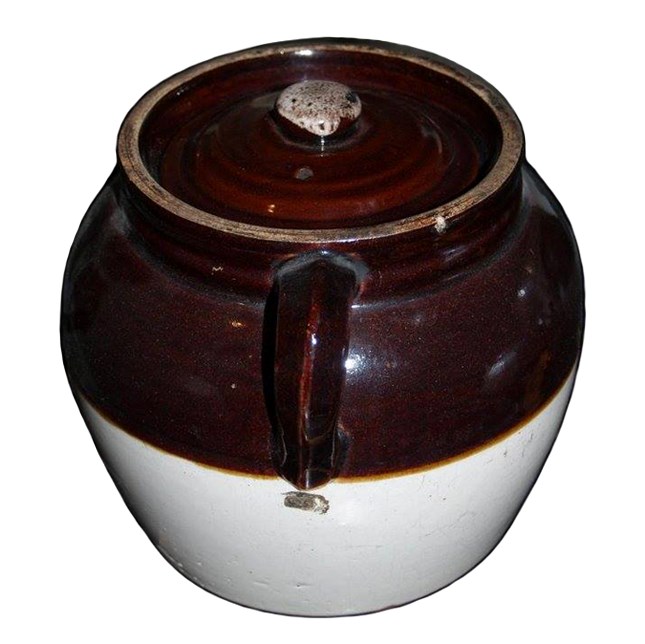Last updated: October 10, 2024
Article
Beanpot

John Fitzgerald Kennedy NHS Museum Collection (JOFI 425)
On the stove in the Kennedy house kitchen sits the earthenware, two-tone beanpot pictured here. Designed for use in creating dishes that required long, slow cooking times, beanpots were popular in New England, and still have a special connection to Boston.
Baked beans as a popular New England dish have roots that can be traced back to the early 17th century, when colonists at Plymouth were introduced to the dish by Native Americans. Baked beans continued to be a favored Sunday meal well into the later colonial period as they could be kept warm overnight in an oven, thereby circumventing the prohibition of work (including cooking) on the Sabbath that many New Englanders observed, but still providing a hot meal. Boston baked beans were usually sweetened with the addition of maple syrup or molasses. In a 1967 interview with the National Park Service, Mrs. Rose Kennedy echoed this tradition when she recalled:
"we had the beanpot because we used to have beans every Saturday night as all good Bostonians did . . . and then we had them warmed over Sunday morning, and I used to think they were at their best, warmed over in the gravy."
The tradition of baked beans as a dish popularly associated with Boston continues to this day in a variety of ways. "Bean Town" is still a common nickname for the city that may have originated from a 1907 event called "Old Home Week" which featured a beanpot as one of its symbols. Also, the annual collegiate hockey tournament between Boston College, Boston University, Harvard and Northeastern is known as the "Beanpot" and has run for more than half a century.
